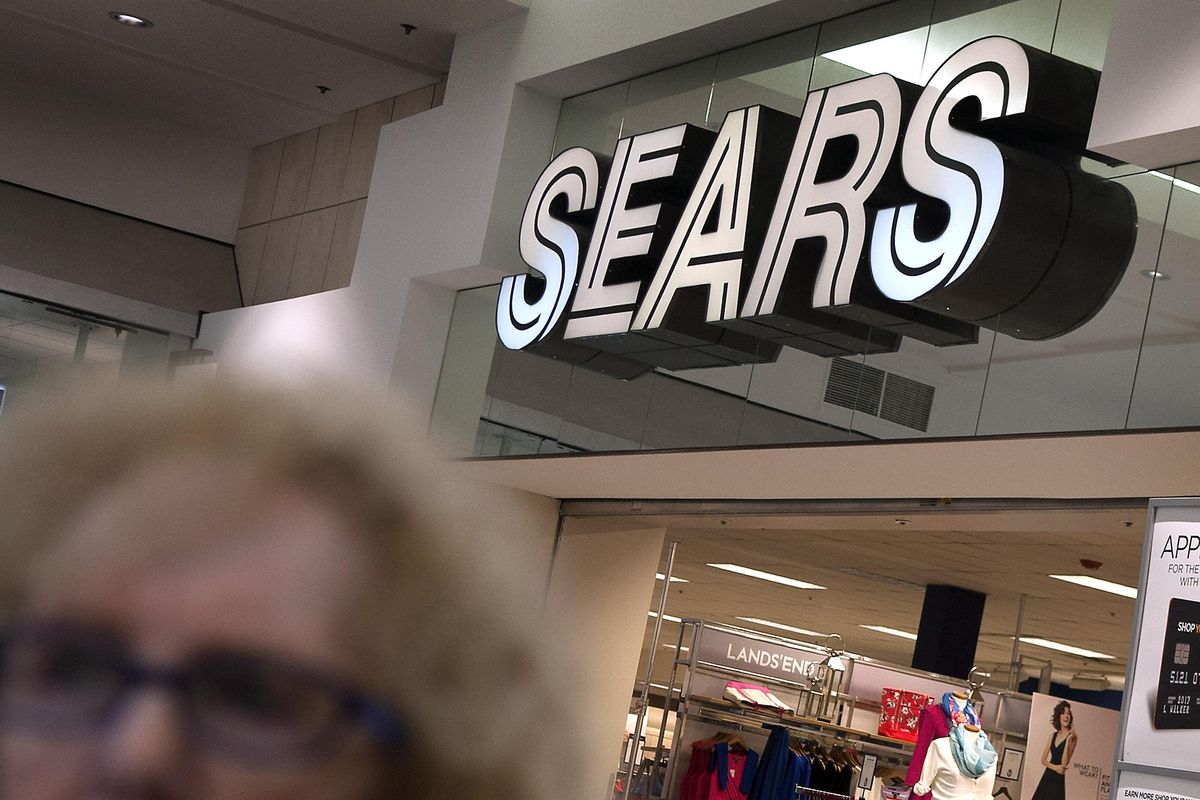Kmart, Sears face ‘substantial doubt’ about finances as losses grow

Sears, a back-to-school shopping destination for generations of kids, has said that after years of losing money, there is “substantial doubt” it will be able to keep its doors open.
It was a dramatic acknowledgment from the chain that owns Sears and Kmart stores, which has long held fast to its stance that a turnaround is possible, even as many of its shoppers have moved on to Wal-Mart, Target or Amazon.
“Our historical operating results indicate substantial doubt exists related to the company’s ability to continue as a going concern,” Sears Holdings said Tuesday in its annual report.
The biggest question, the parent company said, is whether it can raise enough cash to stay afloat. It has $4.2 billion in debt, up from $3 billion a year ago.
The regulatory filing rattled investors, and the company’s stock plunged 12.3 percent to close at $7.98 Wednesday.
An executive at Sears and Kmart’s parent company wrote in a blog post later Wednesday that the distressed retailer remains “a viable business” and is focused on turning itself around.
In Spokane and Spokane Valley, the two Sears and sole Kmart stores have been a staple of retail shopping for decades. But similar to national trends, all three seem to have dwindling patrons going through their doors in recent years.
Glenn Owen, a 79-year-old retiree who worked for Sears for 40 years, was out shopping for clothes Wednesday at the Sears at NorthTown Mall.
“They were a good company back then,” he said, while leaving the store empty-handed. “But the No. 1 problem now is they don’t have anyone there to help you with service.”
Owen said he was able to retire and invest the money he made from working for the company and now lives comfortably. He said he knows a few friends who work for Sears but won’t shop there themselves.
“I still buy my clothes here,” he said. “I feel like I owe them that much.”
At Kmart on East Sprague Avenue, most of the shoppers interviewed around 3:30 p.m. Wednesday were there to order pizza at the Little Caesars in the food court.
One woman, who asked not to be named, was there to return a shirt she bought last week. It was the first time she’d stepped foot in a Kmart store in more than five years, she said.
Sears Holdings, the parent of Kmart and Sears, Roebuck, & Co., was formed after the March 2005 merger between the two American retail icons. For decades, Sears reigned as one of the country’s largest retailers, with roughly $40 billion in revenue and 2,500 stores in the U.S. and Canada.
But in recent years the company has struggled to keep its footing. The decline of suburban shopping malls and the rise of online retail have dealt a double-whammy to both Kmart and Sears. As a result, the parent company has shuttered dozens of stores and sold off some of its brands.
Sears Holdings hasn’t turned an annual profit since 2010. Last year, it reported losses of $2.2 billion. Annual revenue, meanwhile, declined 12 percent to $22.1 billion.
Last month, the company said it was planning a “strategic transformation” by trimming $1 billion in annual costs. It also recently announced plans to close an additional 150 Kmart and Sears stores.
“We believe the actions outlined today will ensure that Sears Holdings becomes a more agile and competitive retailer with a clear path toward profitability,” CEO Edward Lampert, a hedge-fund manager who combined Sears and Kmart in 2005, said in February.
But six weeks later, Sears executives warned that those efforts may not be successful. Even so, they said, executives will continue to try to raise cash by financing debt and selling off real estate.
“We acknowledge that we continue to face a challenging competitive environment,” the company said in its annual report. “We cannot predict, with certainty, the outcome of our actions to generate liquidity.”
The cautionary language marked the first time Sears has offered such warnings in its filings with the Securities and Exchange Commission.
In a statement released Wednesday, Sears Holdings chief financial officer Jason Hollar said that media reports about the warnings failed to include “the actions we are taking to mitigate those risks.”
“It is very important to reiterate that Sears Holdings remains focused on executing our transformation plan and will continue to take actions to help ensure our competitiveness and ability to continue to meet our financial obligations,” Hollar said in the statement.
Still, the warning is another setback for Lampert, 54, a Yale-educated billionaire once known for his savvy investments. His magic has not worked at the aging retailer, even after his ESL Investments hedge fund pumped $1 billion into the company. The company has lost $5 billion in the last three years, and has shuttered hundreds of stores.
The company now has about 1,430 Sears and Kmart stores in the United States, down from 3,500 in 2010.
All the while, the share prices have steadily fallen.
Analysts said the fact that the “going concern” language was contained in management discussion of Sears annual report and not in the letter from the company’s auditor was an important distinction.
“If an auditor puts ‘going concern’ language in its opinion of the company, then that can trigger a default and become more serious,” said Carla Casella, managing director and senior analyst at J.P.Morgan. “Sears lenders could actually be asked to be paid back” if the company is required to “cure” or fix the problem.
“The company saying there could be the event of default is important, but not as serious,” Casella said. “Sears can recover from this if they are able to make good on their restructuring plan, which is to cut costs, and to sell assets, real estate and businesses.”
Spokesman-Review reporter Jonathan Glover contributed to this report.